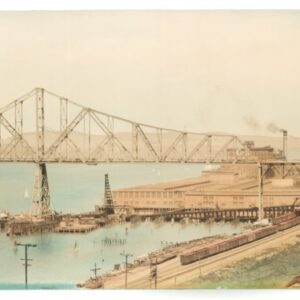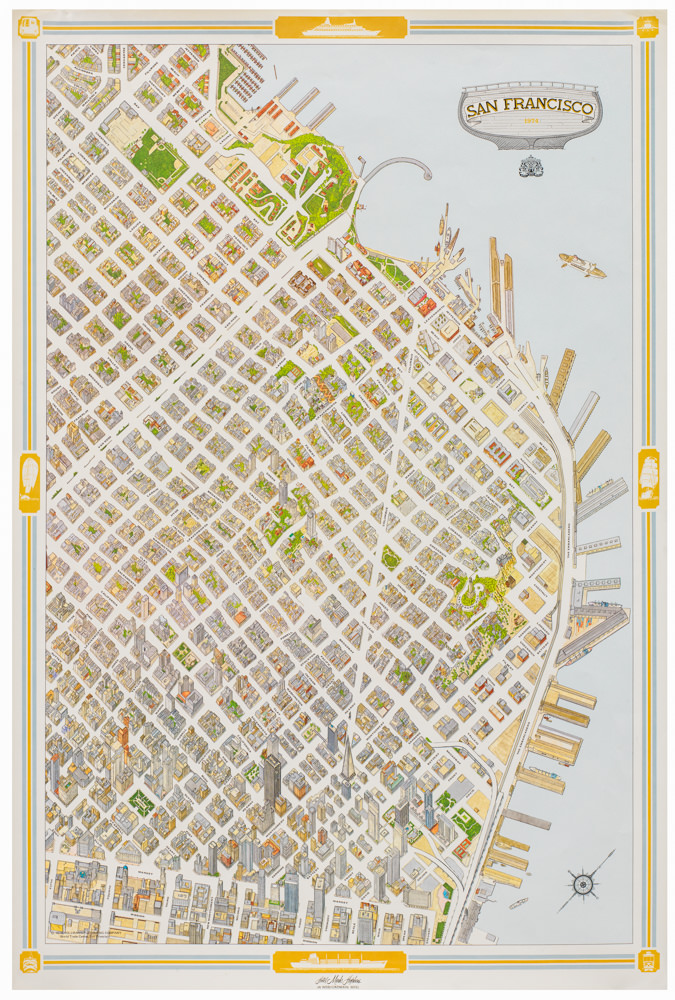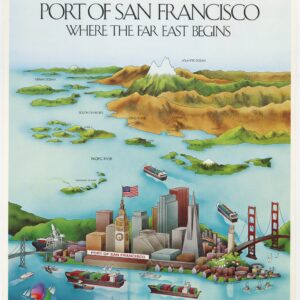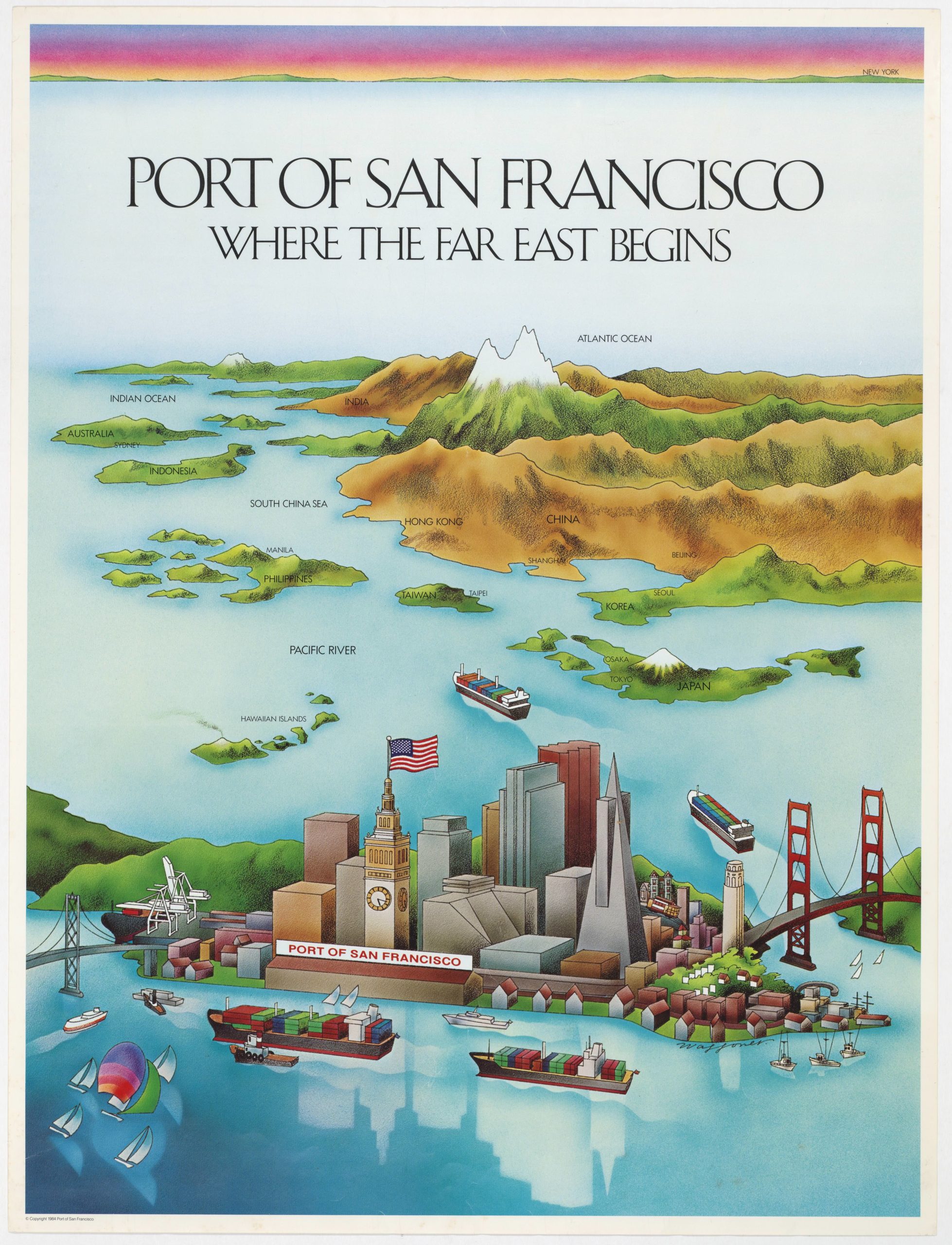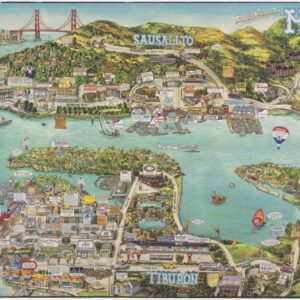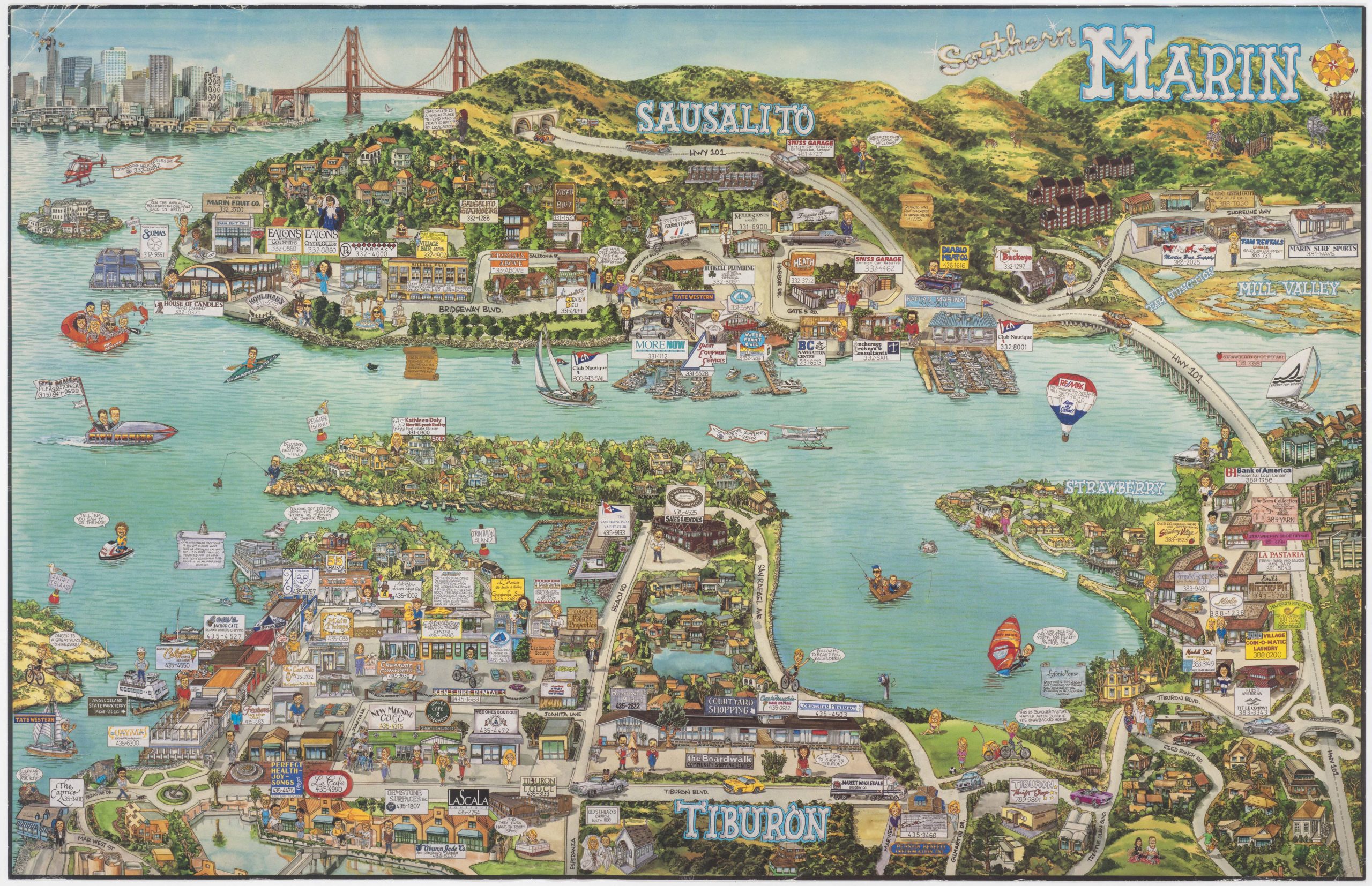A very unusual and exceedingly rare piece of Californiana.
The Raising of the American Flag and Taking Possession of California by Commodore John Drake Sloat… at Monterey, July 7, 1846.
$750
1 in stock
Description
This scarce photo-engraved print depicts U.S. Navy Commodore John Drake Sloat taking control of the Mexican customs house in Monterey in 1846, the moment when California effectively became part of the United States.
The print seems to have been designed as a kind of certificate, with the date left partially blank to be filled in by hand. This example is dated October 31, 1906, the 60th anniversary of the depicted events. It is signed with compliments by Edwin A. Sherman. Edwin Allen Sherman (1829-1914) was a Massachusetts native who enlisted with the U.S. Army in 1845 following the prospect of war with Mexico. He served as a soldier and interpreter with Generals William J. Worth, Zachary Taylor, and Winfield Scott. He participated in the battles of Palo Alto, Resaca de la Palma, Vera Cruz, Matamoras, Cerro Gordo, and Monterey.
Sherman played a crucial role in setting up and distributing The American Flag, an army newspaper set up in Mexican Government printing offices. Later, he became the editor and publisher of The Life of Rear-Admiral John Drake Sloat, U.S. Navy, for which this image was carefully selected. In many ways, Sherman’s signature constitutes an important validation of the scene by an eyewitness.
The scene depicts the raising of the American flag over the Mexican customs house in Monterey. A contingent of smaller crafts are still approaching the shore from the larger ships in the bay. Among the vessels shown, we find the fleet’s flagship, the frigate Savannah, and the U.S. Sloops of War Cyane and Levant.
A note along the bottom of the inscription informs us that the image is based on the earliest known sketch of the event but does not specify further what this is. The composition itself is signed W.A. Coulter in the print, which refers to William Alexander Coulter (1849–1936). He was a famous American painter of marine subjects, but not someone present at the events. Nevertheless, we feel assured that the artists recreated the atmosphere and content most convincingly due to a particular feature of our print.
Context is Everything
Commodore Sloat’s annexation of California in 1846 played a crucial role in the expansion of the United States during the mid-19th century. At the time, California was part of Mexico, which had gained independence from Spain in 1821. The region was sparsely populated and primarily controlled by Mexican settlers, although it had also attracted American immigrants. In the spring of 1846, as tensions escalated between the United States and Mexico, President James K. Polk ordered Commodore Sloat to sail to the Pacific Coast and secure California for the United States. Commanding the Pacific Squadron, Sloat led a fleet of ships to the California coast.
Upon learning of the commencement of the Mexican-American War, Sloat immediately set his sights on taking California.
A strategic approach was taken to the task. Sloat knew Mexican forces were outnumbered and ill-prepared to defend the vast territory. Consequently, swift action was the best option. On July 7, 1846, he ordered the raising of the American flag over the Customs House in Monterey. This event set the stage for further territorial expansion and the eventual formal acquisition of California through the Treaty of Guadalupe Hidalgo in 1848.
Commodore Sloat’s actions were instrumental in securing California as part of the United States and significantly impacted the history of the American West. The annexation and later acquisition of California expanded U.S. territory and opened up incredible opportunities for westward migration. Over time, California’s resources and strategic location transformed it into a significant economic and cultural hub in the United States.
Census
The print is very rare. The OCLC has no recorded examples, and our research has only led us to identify a single parallel example (see last paragraph below).
We find several institutional collections that hold a black-and-white photographic reproduction of the image by itself – i.e., without the caption text below. Most, if not all, of these appear to be of a later date. We have identified references to such a black-and-white photographic print in the Library of Congress, which contains a note that it was copied by H.H. Ritter in 1938. The Center for Sacramento History has a seemingly identical one, which they also date 1938 (inv. no. 1982/078/0727), presumably based on the LoC example. A third example of this photographic reproduction is found in the National Archives and held under the Naval History and Heritage Command (cat.no. USN 900391).
Several published works with an image very similar to ours refer to a 1902 example of this print held at the Bancroft Library (University of California Berkeley). While searches in the Bancroft Library’s database have yielded no cataloged results, we have found a low-resolution image of it from a Mexican publication, which suggests that the Bancroft example is the same hand-signed type as ours.
Cartographer(s):
Condition Description
Stains and surface abrasion. Repaired tear extending in 2.5 inches from margin at bottom-left. Creases and wear at bottom margin. Small chip at the bottom-right corner.
References
